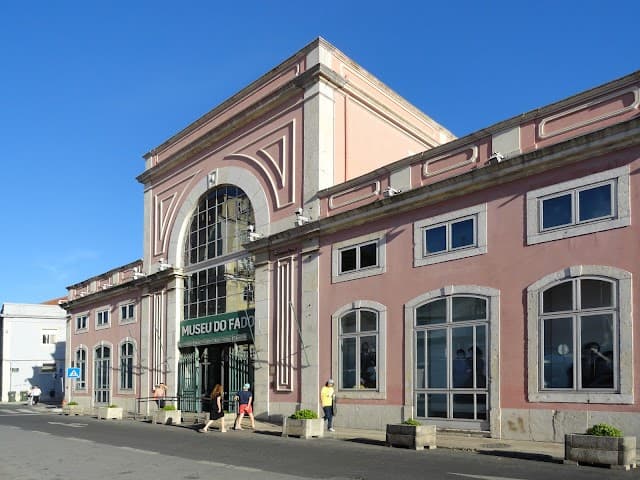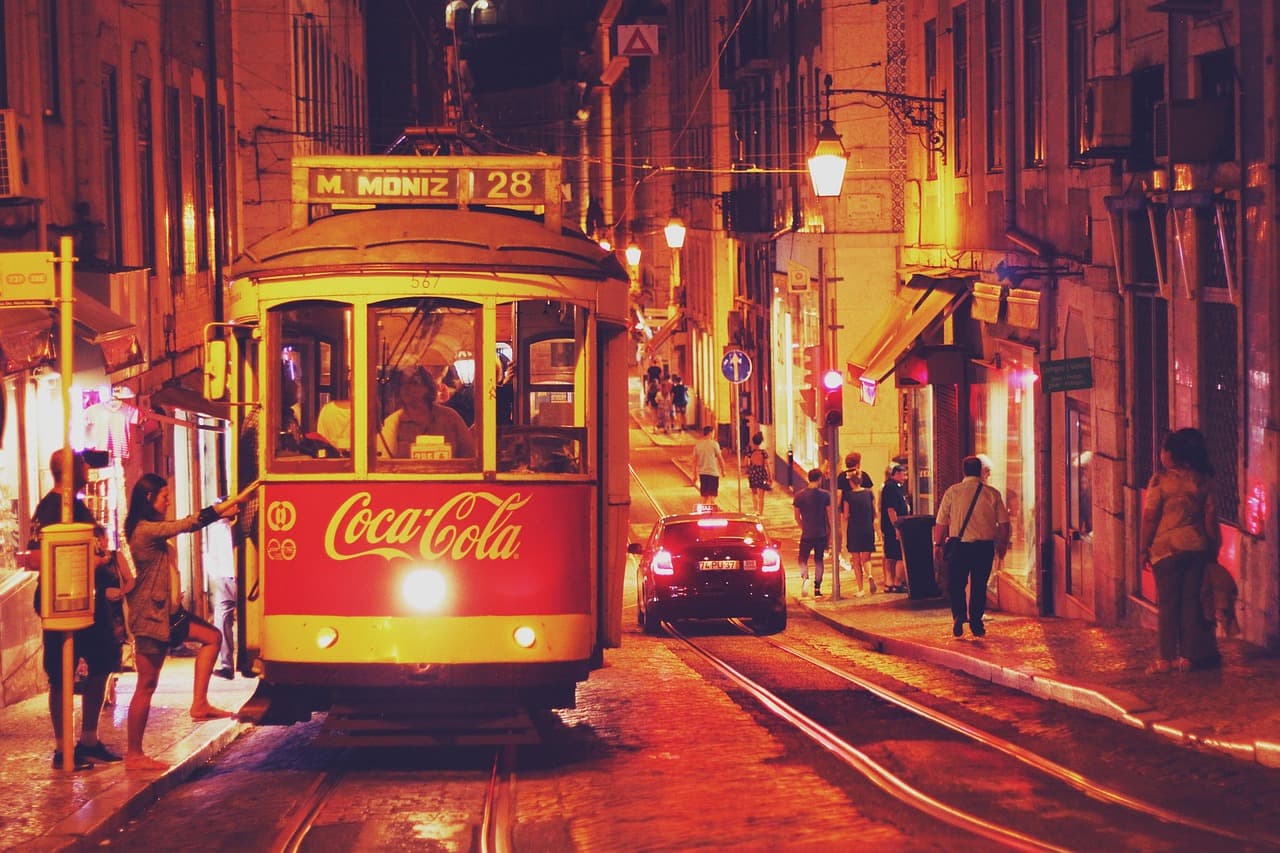
These 10 spectacular viewpoints!
To begin with, Lisbon is a city of hills and light. Built on seven heights descending toward the Tagus River, it has developed a genuine culture of panoramas — those famous miradouros, urban lookouts where people pause to breathe, watch, talk, dream, or work out. They’re not just viewpoints — they’re living places, often featuring a kiosk, shaded benches, a garden, sometimes a street musician blending with the city’s rhythm. At each one, you get that feeling that the whole world agreed to meet right there. It’s an atmosphere, an indescribable experience. Wandering from one miradouro to another is like reading Lisbon as an open book, page after page, from sunrise to sunset.
This itinerary highlights ten emblematic miradouros that, together, offer Lisbon as a gift. For each, we describe the atmosphere, the best time to visit, a practical tip, and, when useful, a nearby stop to extend the experience. Shall we?
1. Miradouro de Santa Luzia — the romantic soul of Alfama
In the heart of Alfama, Santa Luzia charms visitors with its flowered garden and azulejos panels depicting the conquest of Lisbon. Beneath bougainvillea-covered pergolas, the view opens onto red roofs, domes, and the shimmering Tagus.
Best time: Early morning, when the neighborhood awakens, or just after a rainstorm, when the light cleans the façades and the air smells of fresh rain — that feeling of “this feels so good…”
Atmosphere: Soft and intimate; guitarists sometimes play fado outdoors — and if they don’t, the melody will still play in your head.
Nearby: Walk two alleys down to the Sé Cathedral or lose yourself in Alfama’s stairways. Actually, you never get lost there — you always find yourself.

2. Miradouro das Portas do Sol — the living postcard
A few meters away, Portas do Sol is the most photographed scene in Lisbon — the local Mona Lisa (minus the glass and guards). Street artists, café terraces, São Vicente Monastery in sight, and cruise ships on the river — it’s a delight.
Best time: Late morning for the play of shadows in Alfama’s alleys. Honestly, any time works.
Atmosphere: Lively and cosmopolitan — perfect to feel the city’s pulse.
Tip: For photographers, come at dawn — you’ll have the place almost to yourself. For the same vibe on a spring Saturday night… well, you’d need a national strike, but the Portuguese rarely stop working.
3. Miradouro da Graça (Sophia de Mello Breyner) — friendly heights
Reachable on foot (warning: steep climb!) or via tram 28. Gardens, benches, and a small kiosk serving imperial (draft beer), sparkling water, or coffee — everything invites you to slow down. The view stretches from São Jorge Castle to Baixa and the 25th of April Bridge.
Best time: Sunset — the golden light sketches the skyline. Breathtaking.
Atmosphere: Relaxed and local; come for both the view and the conversation.
Nearby: The Graça church and convent, plus alleys with unexpected azulejos. Keep your eyes open — surprises hide everywhere.
4. Miradouro da Senhora do Monte — the ultimate wide angle
Higher still, Senhora do Monte offers one of the most complete panoramas over Lisbon: hills, castle, downtown, river, bridges — all at once. If you’ve lost someone in the city, you might spot them from here.
Best time: Late afternoon or night — the city lights form a constellation. Pure magic.
Atmosphere: Peaceful, ideal for photographers, dreamers, artists, lovers.
Tip: After-rain clarity makes for exceptional visibility.
5. Miradouro de São Pedro de Alcântara — Bairro Alto’s elegant terrace
A terraced garden with a fountain, manicured hedges, and, facing you, the castle hill. Day or night, it’s a Bairro Alto gathering place — musicians, students, wanderers.
Best time: Early evening, before dinner in Bairro Alto or Chiado.
Atmosphere: Bohemian chic.
Nearby: The Elevador da Glória climbs right up to it — handy if you’re coming from Baixa.
6. Miradouro do Castelo de São Jorge — history in 360°
The castle itself is a monumental miradouro. From its ramparts, you embrace the city in every direction — medieval stones underfoot, modern Lisbon on the horizon.
Best time: Morning, when crowds are thinner. (Yes, I keep saying that — you fall for this city so fast, you want it all to yourself.)
Tip: The ticket grants access to several towers; take your time to explore different angles. You’re here — make the most of it.
7. Miradouro do Parque Eduardo VII — the royal perspective
At the top of Avenida da Liberdade, the park unrolls a green carpet down to the river. Geometric hedges guide the eye from Baixa to the Tagus. A green lung, perfect for running, reading, or picnicking — or watching others do it. Doing nothing is fine too, right?
Best time: Late afternoon, when the light bathes the view.
Atmosphere: Family-friendly and sporty.
Nearby: Don’t miss the Estufa Fria (Greenhouse) — a haven of exotic plants and cool air.
8. Miradouro de Santa Catarina (Adamastor) — the bohemian soul facing the Tagus
On Santa Catarina hill, the Adamastor statue recalls the mythology of the Great Discoveries. The view captures the 25th of April Bridge, the docks, and cruise ships.
Best time: Sunset, for fiery skies. You’ll have to choose between sunsets — unless you’re staying several days… but you’ll be back, right?
Atmosphere: Youthful and free — guitars, sketchbooks, friends, long talks. Just easygoing.
Tip: Bring a light jacket — even in summer, the river breeze can surprise you. Forgot it? We also have an article about pharmacies in Portugal!
9. Miradouro do Elevador de Santa Justa — the neo-Gothic icon
Designed by engineer Raoul Mesnier (inspired by Eiffel), the lift connects Baixa and Bairro Alto. At the top, a walkway leads to a platform overlooking Rossio, the Carmo ruins, and Lisbon’s rooftops.
Best time: Early morning to skip the queue. Or, if you love queues, come mid-morning on a sunny day — joy guaranteed.
Atmosphere: A technical postcard; the wooden cabin ride is part of the charm.
Nearby: The Carmo Convent and its open-sky Gothic ruins.
10. Miradouro do Cristo Rei (Almada) — the city face-to-face
Across the river, the Cristo Rei sanctuary dominates the south bank. Inspired by Rio, the statue offers a frontal view of Lisbon — bridge, downtown, hills, ocean in the distance.
Best time: Morning (light behind you) or twilight (dramatic backlight).
Access: Ferry from Cais do Sodré to Cacilhas + bus, or by car via the bridge.
Photo tip: A telephoto lens captures the architectural details of Baixa beautifully.
How to plan your miradouros tour (and keep your legs intact)
Lisbon is physically demanding — steep ups and downs will test your calves. To avoid exhaustion, divide your day into two loops:
Morning loop (Alfama–Graça): Santa Luzia – Portas do Sol – Graça – Senhora do Monte – Castle.
Take tram 28 for part of the route and stop for breakfast in Alfama (tip: pastel de nata + coffee).
Afternoon/evening loop (Chiado–Bairro Alto–Cais do Sodré): São Pedro de Alcântara – Santa Justa – Santa Catarina – Parque Eduardo VII (or the reverse depending on the light).
Enjoy an aperitif at the São Pedro de Alcântara kiosk and end at Adamastor for sunset.
Cristo Rei: Plan half a day — the view is worth every minute.
Quick Practical Tips
- Shoes: Non-slip soles — the calçada stones can be slippery.
- Sun & wind: The Tagus breeze is sneaky — bring a hat and light layers.
- Transport: Mix walking, tram, and funiculars (Glória, Bica) to save energy.
- Safety: Lisbon is quite safe, but stay alert to pickpockets in crowded areas — as everywhere.
- Respect: Some miradouros border residential zones; keep noise low at night and respect locals’ peace. Remember, tourist cities are also places where others live and work to make your stay enjoyable.
Why Miradouros Are the Soul of Lisbon
Miradouros aren’t just scenic spots to photograph — they tell the story of Lisbon’s organic bond with its river and hills. They explain that unique Lisbon way of life: slowing down, chatting, taking your time. They’re also spaces of connection — where locals, travelers, artists, and families share the same horizon and, for a few minutes, the same emotion. It feels good to feel united in a world that often feels divided.
And maybe that’s the key: in Lisbon, people look together. You learn to lift your eyes and let yourself be carried away by ever-changing light. From one miradouro to another, the city reveals itself — it breathes.
P.A.
Share this article
Suggested articles

Lisbon Fashion Week, Showcasing Portuguese Creativi
When Lisbon dons the attire of a creator and its streets transform into runways, it’s clear that ModaLisboa, the Lisbon Fashion Week, has returned !
.jpg&w=3840&q=75)
Maritime Museum in Belém, The Soul of Portuguese Navigators
On the banks of the Tagus River, near the historic Belém Tower in Lisbon, lies a place that transports visitors to the heart of Portugal’s great maritime adventures : the Maritime Museum (“Museu da Marinha” in Portuguese).
.webp&w=3840&q=75)
The National Azulejo Museum in Lisbon
A true cultural treasure lies hidden in the peaceful neighbourhood of Xabregas in Lisbon: the National Azulejo Museum (Museu Nacional do Azulejo). Often overlooked by tourists, this museum, housed in the magnificent Madre de Deus Convent founded in 1509 by Queen D. Leonor, is well worth a visit.
.jpg&w=3840&q=75)
The Calouste Gulbenkian Museum : Lisbon’s Hidden Masterpiece
In the heart of a quiet Lisbon district, away from the hustle and bustle of the city centre, lies a treasure often overlooked : the Calouste Gulbenkian Museum! A true gem for art lovers (and not only them), this place is often described as a “hidden masterpiece”, as its richness far exceeds its sober appearance and discreet location…

Fado Museum in Lisbon, Living Memory of a Music
In the heart of Lisbon’s historic Alfama district, the Fado Museum is a must-visit for anyone wanting to understand the musical soul of Portugal ! Opened on 25 September 1998, this museum is entirely dedicated to fado, the melancholic and passionate Portuguese music genre.

Lisbon nightlife: bars, fado and clubs
Lisbon is a city of contrasts. During the day, its cobbled streets and tiled façades invite long walks under the sunlight that has inspired painters and poets for centuries. But when the sun goes down, the city takes on a completely new identity. The pace quickens, music fills the air, and neighborhoods transform into vibrant hubs of culture and entertainment.


